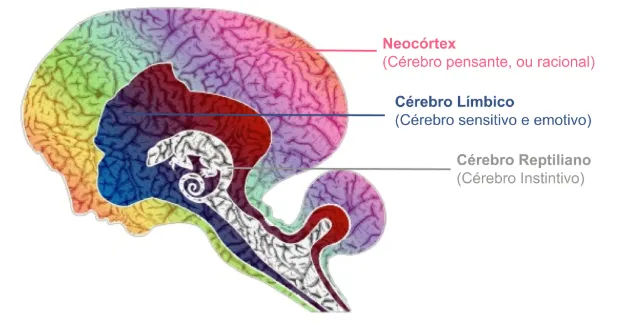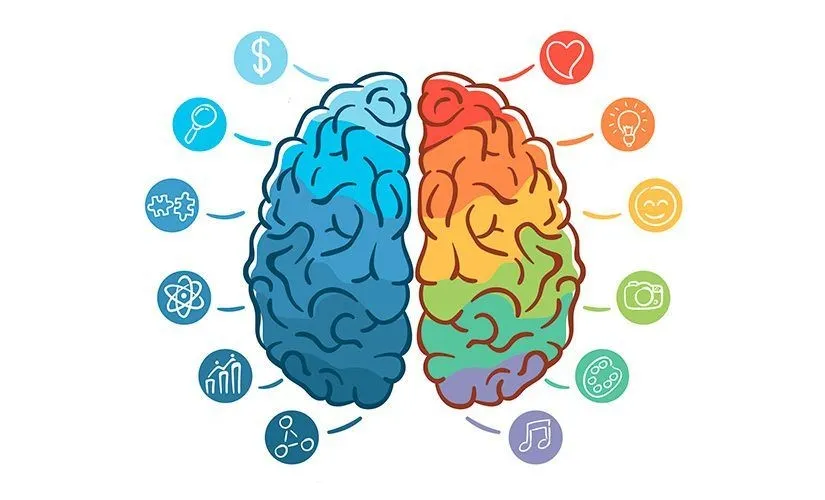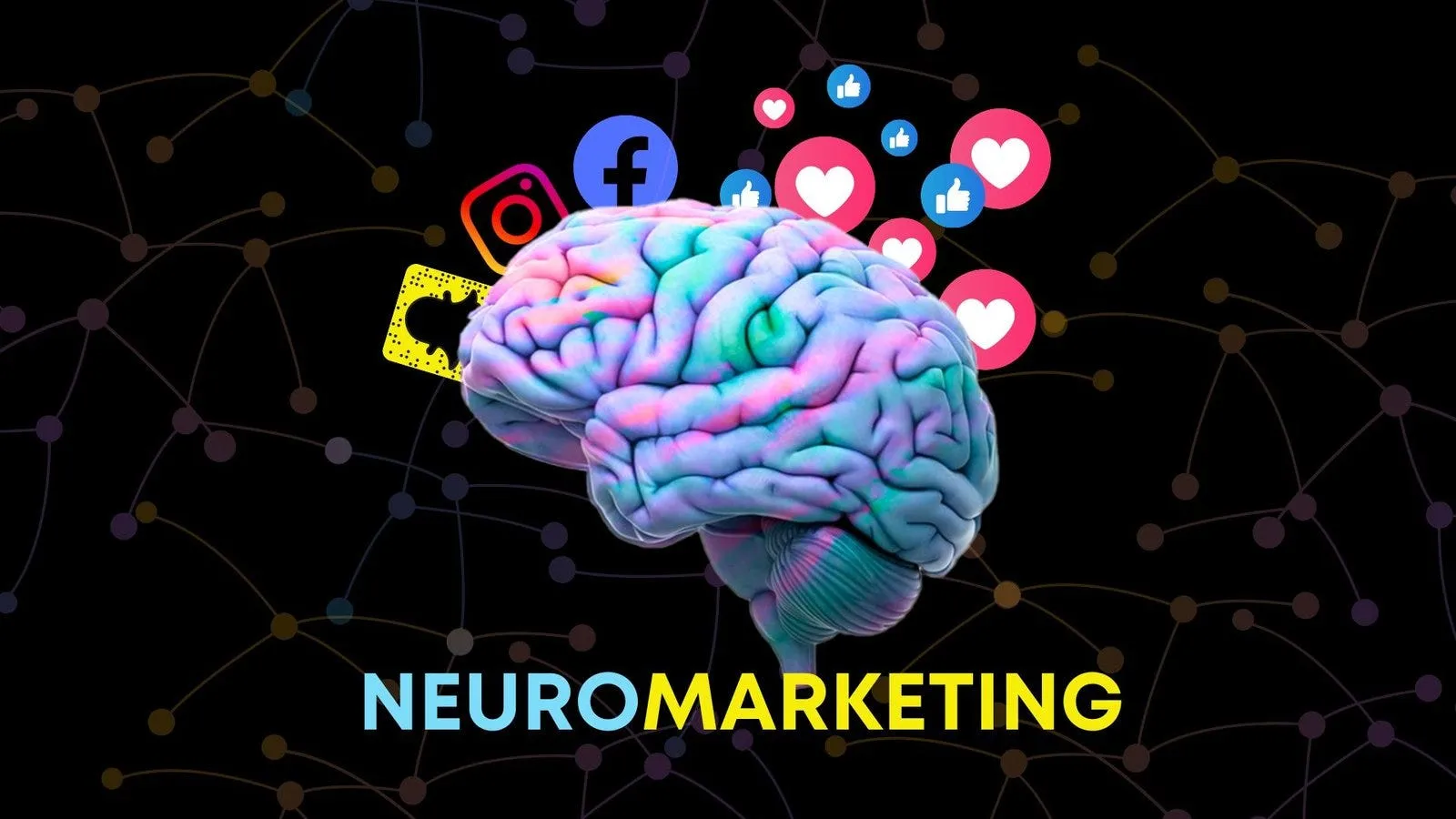Neuromarketing: The Science to Sell More With Digital Marketing
Discover how neuromarketing combines neuroscience and marketing to understand consumer behavior, boost sales, and create more effective digital campaigns. Learn practical strategies that tap into the unconscious mind.
Have you ever wondered why some brands make you feel an irresistible urge to buy while others leave you completely indifferent? The answer lies in something much deeper than traditional marketing techniques – it's hidden in your brain's unconscious processes.
What if I told you that 95% of your purchasing decisions happen without you even realizing it? That's where neuromarketing comes in, a fascinating field that combines neuroscience with marketing to understand what really makes consumers tick. This isn't about manipulation – it's about understanding human psychology to create genuine connections between brands and customers.
In this comprehensive guide, you'll discover how neuromarketing can revolutionize your digital marketing approach, boost your conversion rates, and help you build a brand that resonates on a deeper level with your audience. We'll explore practical strategies you can implement today, real-world case studies from major brands, and the ethical considerations that come with this powerful knowledge.
Table of Contents
- What Is Neuromarketing and Why It Matters
- The Three-Brain Theory: Understanding Your Customer's Mind
- How Consumer Decisions Really Work
- Practical Neuromarketing Strategies for Your Business
- Visual Psychology and Design Principles
- The Power of Persuasive Content
- Real-World Success Stories
- Neuromarketing Ethics: Persuasion vs Manipulation
- Implementing Neuromarketing in Your Digital Strategy
What Is Neuromarketing and Why It Matters
Neuromarketing is the marriage between neuroscience and marketing that aims to understand what makes a consumer prefer one brand over another, buy or not buy a product, and even become a loyal customer for life.
This field studies what's not being explicitly said in satisfaction surveys, feedback forms, or social media comments because these motivations are ones that people don't even recognize themselves. The decision-making process doesn't happen rationally, logically, and consciously as we tend to believe – it starts in the unconscious when certain stimuli activate specific parts of the brain.
Unlike traditional market research that only shows you the tip of the iceberg, neuromarketing reveals the hidden motivations that drive purchasing behavior. Our nervous system uses a "filter" to validate our choices, removing the need for reflection in every decision we make.
Think about it: if you had to consciously decide to breathe or make your heart beat, you wouldn't have time for anything else. The same principle applies to many of our purchasing decisions – they happen on autopilot, driven by unconscious processes that neuromarketing helps us understand.

The Three-Brain Theory: Understanding Your Customer's Mind
To grasp how neuromarketing works, you need to understand the basic structure of the human brain. Neuroscientist Paul MacLean's Triune Brain Theory divides our brain into three distinct parts:
The Reptilian Brain
This controls everything responsible for our survival – breathing, heartbeat, and basic instincts. It's activated by primitive emotions like fear, hunger, and anger. This part of the brain is extremely selfish and only cares about meeting its own needs. When you create content that speaks only about yourself or your company, you fail to capture attention because you're not addressing the reptilian brain's primary concern: "What's in it for me?"
The Limbic Brain
This processes more complex emotions and is responsible for storing data. It's activated by sensations involving the five senses and plays a crucial role in memory formation. This is where brand associations and emotional connections are formed.
The Neocortex
This is the part we believe we use for decision-making since it controls reasoning and our social side. However, research shows that once decisions are made at the reptilian and limbic levels, the neocortex simply rationalizes what was already decided, giving us the illusion that our choices are logical.
A study by the American Association for the Advancement of Science (AAAS) revealed that choosing can be divided into three stages: your brain decides what you're going to do, this decision appears in your consciousness (transmitting the sensation that you're making a rational decision), and then you act according to the decision already made.
How Consumer Decisions Really Work
External stimuli like advertisements, sounds, smells, or interactions with other people activate the reptilian and limbic systems before we're even conscious of them. People are driven by the fundamental principle of avoiding pain and seeking pleasure – and instinctively, we're more likely to move away from pain than toward pleasure.
This is why scarcity marketing works so effectively. When the alternative to buying is the loss of opportunity, people tend to make the purchase. Understanding this psychological trigger can help you craft more compelling offers and calls-to-action.
The famous Thinking, Fast and Slow by Daniel Kahneman explores these two systems of thinking in detail, showing how our fast, intuitive system often overrides our slow, analytical one when making purchasing decisions.
Practical Neuromarketing Strategies for Your Business
You don't need expensive studies to apply neuromarketing principles. Here are proven strategies you can implement immediately:
Images Work Better Than Text
Visual content is preferred by most people because we understand images much more easily than words. Use related images to bring persuasive power to your message – whether it's a photo of the actual product you want to sell or a visual synthesis of your message concept.
This is why visually-driven social media platforms like Instagram influence people more quickly than text-based platforms. The human brain processes visual information 60,000 times faster than text.
The Power of Human Faces
We're social beings who interact with many people throughout our day. Happy faces and babies looking directly at you attract tremendous attention. Whether the face is male or female, we tend to reciprocate that person's gaze.
Studies show that images with people looking directly at the camera generate higher engagement rates in digital marketing campaigns. Use this principle in your social media posts, landing pages, and email marketing.
Color Psychology in Action
Each color affects our emotions completely differently, making them powerful allies in neuromarketing-based strategies. People make subconscious judgments about an environment or product within 90 seconds of initial viewing, and around 62% of that assessment is based solely on colors.
- Red: Creates urgency and excitement
- Blue: Builds trust and reliability
- Green: Suggests growth and harmony
- Orange: Conveys enthusiasm and creativity
- Black: Implies luxury and sophistication

Price Anchoring Strategies
Humans aren't very good at evaluating products and services based on their intrinsic value. We use comparison to assess whether something is expensive or cheap, making price anchoring a crucial strategy for your sales.
For example, if you have multiple products to offer, show the price of each separately and the total investment someone would need to buy all of them. Then offer a lower price than that sum, creating a price anchor with your own products.
You can also anchor against competitors' prices by offering a bonus that none of them provide, making customers perceive your offer as having better cost-benefit value.
Visual Psychology and Design Principles
The layout of your website or blog significantly impacts user behavior. Two key optimization techniques you can apply are A/B testing and heat map analysis to understand how people interact with each element of your pages.
Simple Fonts Encourage Action
According to Roger Dooley, author of "How to Influence the Consumer Mind," simpler fonts that facilitate reading work better when you need to convince someone to take action. The easier it is for someone to take the action you want, the higher your conversion chances.
This principle extends to overall design and usability – remove friction wherever possible in your customer journey.
Building Trust Through Reciprocity
You can't build relationships without trust, and your leads need to learn to trust you. The easiest way to do this is by demonstrating that you trust your audience first, opening precedent for the reciprocity trigger.
How can you do this?
- Offer free trials of your products with maximum features available
- Provide unconditional 30-day money-back guarantees
- Supply multiple payment options
- Share valuable content without requiring email signup
The Power of Persuasive Content
Creating persuasive content isn't about manipulation – it's about guiding your reader through a journey toward understanding and accepting the ideas you're presenting. The reptilian brain is extremely selfish and only cares about meeting its own needs, which is why content that only talks about you or your company fails to capture attention.
Essential Persuasion Techniques
Use Emotion to Reach Your Audience: The emotions that most influence persuasion are admiration, anxiety, happiness, fear, and anger. Incorporate these strategically in your messaging.
Focus on "You" Not "I": Since nobody's interested in someone who only talks about themselves, create connection with your content consumers. The word "YOU" is highly effective for this purpose.
Leverage the Power of Lists: To prevent text-heavy content from becoming monotonous, use lists so readers can easily find desired information. Step-by-step guides are excellent references for persuasive content.
Master Storytelling: There's no better way to convey information, entertain, and connect than through stories. We're all influenced by narratives because they activate multiple areas of our brain simultaneously.
The principles outlined in DotCom Secrets: The Underground Playbook for Growing Your Company Online with Sales Funnels show how storytelling can be integrated into sales funnels to create more persuasive customer journeys.
Powerful Persuasive Words
Incorporate these trigger words into your content:
- "Because" - Provides reasoning and justification
- "Free" - Triggers the reciprocity principle
- "New" - Appeals to curiosity and novelty
- "Now" - Creates urgency
- "You" - Makes content personal and relevant
Real-World Success Stories
The Coca-Cola vs. Pepsi Study
One of the most famous neuromarketing studies compared these two beverage giants using brain scanning technology. In blind taste tests, participants were evenly split in their preferences. However, when participants knew which drink was Coca-Cola, preference shifted dramatically in Coca-Cola's favor.
Brain scans revealed that when people knew they were drinking Coca-Cola, areas of the brain responsible for memory and cultural associations became highly active. This showed that Coca-Cola's marketing strategy of associating the brand with happy memories and positive experiences had literally rewired how people's brains processed the taste.
Campbell's Soup Redesign
Campbell's partnered with Innerscope Research Inc. to understand why the comfort people felt when thinking about soup at home didn't translate to their shopping experience. Using neuromarketing research, they discovered several key insights:
- People respond better to hot soup (they added steam to the imagery)
- The iconic logo was actually distracting (they reduced its size)
- Spoons in the design were irrelevant (they removed them)
- Vibrant colors created warmth sensations (they enhanced the soup imagery)
These changes, based purely on neurological responses, led to increased sales and better brand perception in retail environments.

Neuromarketing Ethics: Persuasion vs Manipulation
There's an important distinction between persuasion and manipulation that every marketer must understand. While manipulation means making someone take action against their will, persuasion only helps convince others to do something that was already in their plans.
Consider this: despite Coca-Cola's impressive, persuasive marketing that appeals to emotions and uses all elements discovered by neuromarketing, not everyone becomes a consumer of the brand. The company can't convince people who genuinely don't want their products or believe they're unhealthy.
Persuasion and neuromarketing work simply because the right message reaches the right audience at the right time – nothing more. This is similar to the principles discussed in The Challenger Sale: Taking Control of the Customer Conversation, which emphasizes understanding customer needs rather than pushing unwanted solutions.
Ethical Guidelines for Neuromarketing
- Focus on solving real customer problems
- Provide genuine value in your offerings
- Be transparent about your products and services
- Respect customer privacy and data
- Use psychological triggers to help, not exploit
Implementing Neuromarketing in Your Digital Strategy
Now that you understand the principles, here's how to apply them systematically:
Content Marketing Integration
Simplify your message to appeal to the reptilian brain. This primitive part of our brain seeks efficiency and avoids complexity. Deliver direct, specific content using clear examples to facilitate understanding and capture attention.
For those interested in building sustainable wealth while applying these principles, Your Money or Your Life: 9 Steps to Transforming Your Relationship with Money and Achieving Financial Independence offers insights into the psychology of financial decision-making that can inform your marketing approach.
Email Marketing Optimization
- Use subject lines that trigger curiosity or urgency
- Include human faces in your email headers
- Keep paragraphs short (3-4 sentences maximum)
- End with clear, action-oriented CTAs
- Personalize content based on subscriber behavior
Social Media Strategy
According to research, the three main emotions evoked by popular online content are humor, awe, and amusement. How can your content evoke emotion? Choose emotions aligned with the message you want to convey.
For entrepreneurs looking to leverage these insights while building location-independent businesses, The 4-Hour Workweek: Escape 9-5, Live Anywhere, and Join the New Rich provides frameworks for applying psychological principles to business automation.
Website Optimization Checklist
- [ ] Use simple, readable fonts throughout your site
- [ ] Implement strategic color choices based on desired emotions
- [ ] Include human faces looking toward your CTAs
- [ ] Create clear visual hierarchy with proper headings
- [ ] Add social proof and testimonials prominently
- [ ] Optimize page load speed (cognitive load affects decisions)
- [ ] Use white space effectively to reduce overwhelm
Measuring Success
Track these neuromarketing-influenced metrics:
- Emotional engagement: Comments, shares, time on page
- Conversion optimization: A/B test different psychological triggers
- Brand recall: Survey customers about brand associations
- Customer lifetime value: Measure long-term relationship strength
Understanding the psychological aspects of money and decision-making, as explored in Morgan Housel's "The Psychology of Money" Book, can provide additional insights into how customers make purchasing decisions and evaluate value propositions.
The Future of Neuromarketing
As technology advances, neuromarketing will become more accessible to businesses of all sizes. Eye-tracking software, emotion recognition AI, and biometric feedback tools are becoming more sophisticated and affordable.
The key is to remember that neuromarketing is not about manipulating customers – it's about understanding them better so you can serve them more effectively. When you align your marketing messages with how the brain naturally processes information, you create more meaningful connections that benefit both your business and your customers.
Whether you're building the next unicorn startup using strategies from Blue Ocean Strategy, Expanded Edition: How to Create Uncontested Market Space and Make the Competition Irrelevant or focusing on personal effectiveness with insights from The ONE Thing: The Surprisingly Simple Truth About Extraordinary Results, understanding the neuroscience behind decision-making will give you a significant competitive advantage.
Conclusion
Neuromarketing represents the evolution of marketing from guesswork to science-based strategy. By understanding how the human brain processes information and makes decisions, you can create more effective campaigns, build stronger customer relationships, and ultimately drive better business results.
The techniques and strategies outlined in this guide aren't just theoretical concepts – they're practical tools you can implement immediately. Start with simple changes like optimizing your color choices, simplifying your messaging, and incorporating more visual elements into your content.
Remember, the goal isn't to manipulate customers but to communicate with them in the language their brains naturally understand. When you do this authentically and ethically, you'll find that your marketing becomes more effective, your customers become more satisfied, and your business grows more sustainably.
What aspect of neuromarketing will you implement first in your digital marketing strategy? The journey to more effective, brain-friendly marketing starts with a single step – and that step starts today.

